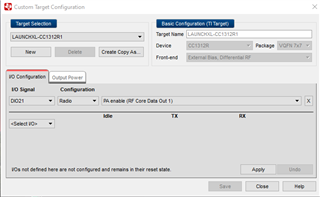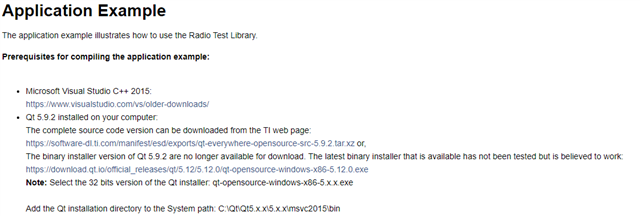Other Parts Discussed in Thread: CC1312R7
Hi there,
I'm trying to build a python library interface to access all features provided in TI's radio_test_lib_app for LP-CC1312R7, The main reason is that we want to have an automated method to run the RF tests and get the result logged, also because the other equipment we use have python library support. I did a search online and found method to wrap C++ library into python libraries. But I'm curious that if you have a better approach to generate the libraries directly for python.
On the other hand, we are also trying to generate the c++ radio_test_lib_app that supports CC1312R7 to start RF test without SmartRF Studio to get a better understand about commands being transmitted over UART. In the linked ticket you mentioned that the sample code needs updates to enable CC1312R7 support. Would you point me to the instructions as well? I'm using MinGW g++ compiler under windows 11 OS.
Thanks a lot for the help,
Yuelin





